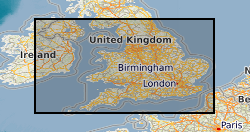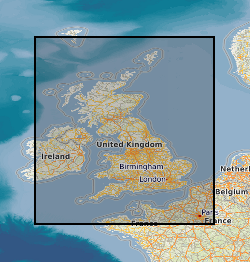Isopach maps
Type of resources
Available actions
Topics
Keywords
Contact for the resource
Provided by
Years
Formats
Representation types
Update frequencies
Scale
Resolution
-

This dataset represents the modelled thickness in metres of the Sherwood Sandstone Group (SSG) in the main Permo-Triassic Cheshire, Wessex, Worcester and East Yorkshire-Lincolnshire basins, considered for their hot sedimentary aquifer geothermal resource potential. This dataset is derived from Rollin, K. E., G. A. Kirby, and W. J. Rowley. Atlas of geothermal resources in Europe: UK revision. British Geological Survey technical report WK/95/7, Regional Geophysics Group, 1995: https://webapps.bgs.ac.uk/data/publications/publication.html?id=21735106 and the European Geothermal Atlas (https://op.europa.eu/publication-detail/-/publication/9003d463-03ed-4b0e-87e8-61325a2d4456).
-

The data comprises information on the subsurface structure of stratigraphic levels and units in the United Kingdom, detailing depth to and thickness of the units. These result from projects in different parts of the UK performed at different times. Common working scales are 1:50 000 and 1:250 000 with appropriate differences in detail. Much mapping results from interpretation of seismic data, and as a result many of the structural maps are in time rather than depth, although some have been depth converted.
-

The Quaternary deposits thickness dataset is a digital geological map across the bulk of the UK Continental Shelf (UKCS), for areas up to a water depth of 200m, which shows the thickness of the deposits over bedrock in three categories: <5 m, 5 - 50 m, and >50 m Quaternary cover. These depth bands were picked because they represent the horizons that have impact on offshore infrastructure deployment. The map is derived from (unpublished) BGS 1:1000000 scale Quaternary digital geological mapping. The map was produced in 2014 in collaboration with, and co-funded by, The Crown Estate as part of a wider commissioned project to assess seabed geological constraints on engineering infrastructure across the UKCS. The data are held by the BGS as an ESRI Shapefile.
-

This dataset represents the thickness in metres of the Upper Devonian in the Midland Valley of Scotland (Stratheden Group and Kinnesswood Formation) over the extent of the model developed by Kearsey, T.I., Receveur, M. and Monaghan, A.A., 2024. Modelled hot sedimentary aquifer geothermal potential of Upper Devonian strata in the Midland Valley of Scotland. Uncertainties in the model are linked to the absence of boreholes penetrating both the top and the base of the Upper Devonian (except the Inch of Ferryton well) and poor seismic reflection data in the centre of the basin where it is thickest and deepest. The extent of the geological units is as shown on the published BGS geology maps, considering the re-interpretation of the Kinnesswood Formation as Devonian in age. The model is presented with high uncertainty.
-

This dataset represents the thickness in metres of the early Carboniferous limestone (ECL) over the Northern and Southern Provinces in Great Britain. The layer may be used to identify prospective geothermal heat resources, such as areas with deep burial depths beneath thick Permian-Mesozoic sequences, as in the Cheshire Basin, and the flanks of the East Irish Sea and Southern North Sea basins; or beneath thick later Carboniferous strata, as in the Stoke-on-Trent area.
 NERC Data Catalogue Service
NERC Data Catalogue Service